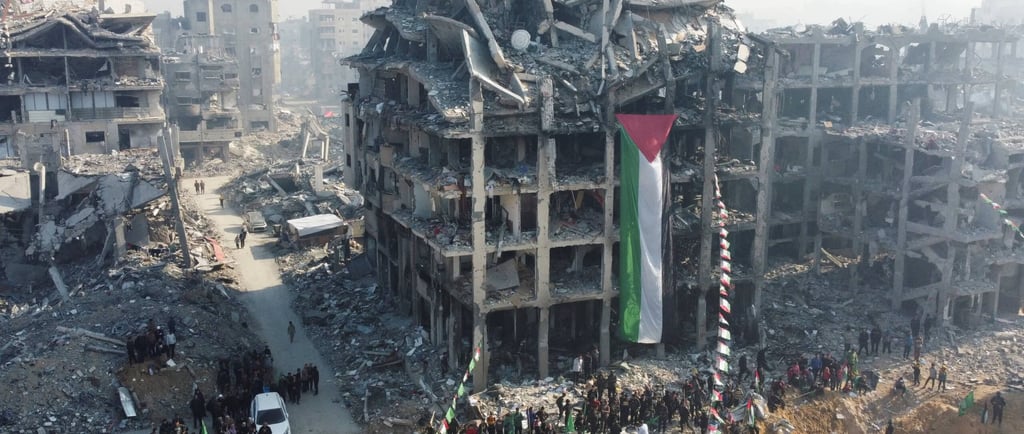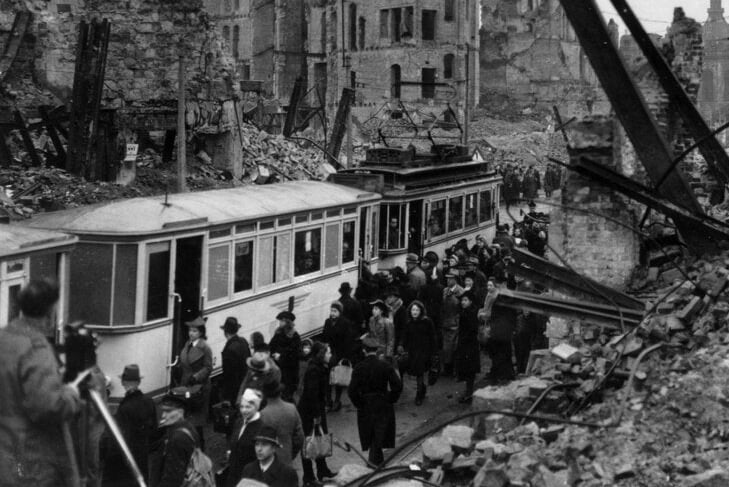Trump's Bold Solution for Gaza: Relocation and Reconstruction
FEATUREDSPORTOPINION


Editorial - Opinion
The Case for Change in Gaza
The Gaza Strip has long been a focal point of conflict, enduring decades of violence and humanitarian crises that have taken a heavy toll on its residents. The ongoing strife, marked by periodic escalations between Israeli forces and Palestinian factions, has led to widespread destruction of infrastructure, severe economic hardship, and an alarming decline in living conditions. These harsh realities necessitate a reassessment of the current situation in Gaza and the urgent need for innovative solutions.
Amid this ongoing turmoil, former U.S. President Donald Trump has proposed a controversial perspective: the relocation of Gazans and a significant reconstruction effort. This proposition, while contentious, aims to address the complex challenges faced by the region's inhabitants who have been caught in the cycle of violence and economic instability. Trump’s approach raises important questions about potential pathways for peace and rehabilitation, suggesting that a radical shift in policy might be necessary to break free from entrenched patterns of conflict.
The dire humanitarian situation underscores the necessity for urgent action. With the dwindling resources and a continuous threat of hostilities, many find themselves trapped in a perpetual state of despair. The need for effective solutions becomes apparent as international attention remains fixed on Gaza's plight, demanding not only immediate relief but also long-term strategies that can restore security and opportunity. Trump's proposal seeks to offer a transformative vision by reevaluating existing frameworks for aid and urban development, prompting a larger conversation about the feasibility of relocation as a means to revitalization.
The Historical Context: Lessons from Post-WWI Germany
Germany 1922
After the conclusion of World War I in 1918, Germany was left in a state of profound despair and destruction. The war had decimated the nation physically, with cities in ruins and an economy in shambles. Millions of Germans were left grappling with the immediate effects of the extensive military conflict, including food shortages and widespread unemployment. This environment of chaos and deprivation fostered a sense of hopelessness among the populace, leading to a deep psychological scar that would take generations to heal.
The Treaty of Versailles, signed in 1919, exacerbated these conditions. The treaty imposed drastic reparations on Germany, stripping it of territories and diminishing its military capabilities. The punitive nature of the treaty not only inflicted economic hardship but also triggered a national humiliation that resonated deeply within German society. Many Germans felt that they had been unjustly blamed for the war, giving rise to a collective resentment and a longing for national restoration. This sentiment played a crucial role in giving rise to extremist ideologies, including Nazism, which promised to reclaim national pride and restore Germany’s former glory.
As we draw parallels between the post-World War I scenario in Germany and the current situation in Gaza, it becomes evident that humiliation and deprivation can be catalysts for extremist movements. The residents of Gaza, much like the Germans post-WWI, face significant physical and emotional strain. Understanding the historical consequences of economic devastation and societal humiliation is essential when considering any strategies for relocation and reconstruction in Gaza. There is a critical need for solutions that prioritize dignity, cooperation, and preserved identity, drawing lessons from the past to avoid repeating history’s mistakes.
The Cycle of Violence: How History Repeats Itself
The phenomenon of cyclical violence is deeply entrenched in human history, often stemming from unresolved conflicts and perpetuated grievances. In numerous societies around the world, including Gaza, there are stark examples of how neglect and humiliation can incite further violence. The history of Gaza is illustrative of these patterns, revealing how the aftermath of conflict can be a breeding ground for new hostilities. When a society is left in ruins, the psychological scars can lead to a sense of helplessness and desperation among its populace, providing fertile ground for radicalization.
Many historians and sociologists argue that the failure to address underlying issues of historical injustice, economic deprivation, and social disintegration often results in cycles of retaliation and violence. The situation in Gaza is exacerbated by long-standing grievances related to territorial disputes and governance structures that many perceive as ineffective or oppressive. Each failure to rebuild and reconcile the societal fabric after a bout of violence leads to a heightened state of tension, prompting further acts of aggression.
Moreover, the concept of humiliation plays a significant role in the perpetuation of conflict. Societal humiliation, whether through perceived injustices or dehumanization, can push individuals or groups towards retaliatory violence. Historical events from various regions have illustrated that when individuals feel marginalized or oppressed, the likelihood of violent insurrection increases. This cycle of violence feeds on itself, resulting in further destruction and instability.
Trump's Solution: Relocating Gazans
Former President Donald Trump has proposed a controversial solution to the ongoing conflict in Gaza, advocating for the relocation of Gazans as a means of addressing both humanitarian and security concerns. This relocation plan is positioned as a pragmatic approach that aims to revitalize the lives of those affected by the prolonged violence while simultaneously enhancing regional stability. However, its feasibility and implications raise significant questions.
The logistics behind such a relocation plan are complex, requiring coordination among multiple stakeholders, including the international community, the Palestinian Authority, and neighboring countries. Establishing a suitable destination for relocated individuals is critical, with considerations ranging from land availability to the infrastructure necessary to support the influx of new residents. Also, the political climate in the region presents an obstacle; acceptance by host countries is crucial for the movement's success, and many nations are already grappling with their own socio-political challenges.
Proponents argue that relocation could provide a fresh start for Gaza's population, offering new opportunities for employment and education in a secure environment. This could, in turn, lead to a significant decrease in the humanitarian crisis currently afflicting the area. By relocating residents away from the conflict zone, advocates believe that rebuilding efforts can be accelerated, creating a foundation for peace and social development in the long term.
However, the ethical concerns surrounding such an initiative cannot be ignored. Critics highlight the potential violation of the rights of individuals who may be forcibly relocated, raising questions about sovereignty and self-determination. Furthermore, the psychological impact on populations who have already faced displacement is a significant factor that must be considered. Inherent challenges such as these demand careful deliberation about whether relocation serves as a viable judgment for the complex dynamics of the Gaza situation, balancing humanitarian needs against security imperatives.
Rebuilding Gaza: A Sustainable Approach
The reconstruction of Gaza following significant population relocation presents a unique opportunity to establish a more sustainable and resilient community. A multifaceted approach to rebuilding is essential, focusing on critical areas such as infrastructure development, educational initiatives, and economic revitalization. These elements will collectively contribute to a comprehensive recovery process that meets the needs of the population while promoting long-term stability.
Infrastructure development is a cornerstone of the rebuilding strategy. This includes not only repairing and reconstructing damaged buildings but also creating modern utilities and transportation networks. Investing in green technologies, such as solar energy and water recycling systems, could greatly enhance the region's sustainability. Improved infrastructure will facilitate better access to services and enhance the overall quality of life for the residents of Gaza, thus reducing vulnerabilities in the future.
Education plays a pivotal role in the reconstruction process. An emphasis on educational programs will empower the youth and provide them with essential skills for the workforce. Collaborations with international educational bodies can help in establishing advanced curricula and providing teacher training. Establishing vocational schools aimed at welding, carpentry, and other trades can foster a skilled labor force, which is crucial for Gaza's economic revival.
Economic revitalization is equally important in ensuring lasting recovery. Efforts must focus on attracting investment and fostering entrepreneurship. International cooperation is vital in this phase, where global partnerships and funding sources can help establish small businesses and industries. Microfinance initiatives can assist aspiring entrepreneurs, particularly women and marginalized communities, empowering them to contribute to the local economy.
Together, these strategies—robust infrastructure, a strong educational framework, and dynamic economic initiatives—offer a holistic approach to rebuilding Gaza. By emphasizing sustainability and community engagement, it is possible to transform the challenges faced into opportunities for a brighter future.
The Ethical Debate: Can We Justify Relocation?
The proposal for relocating a population, particularly in the context of Gaza, raises significant ethical concerns that merit thorough examination. Advocates of relocation often argue that it could provide a fresh start for affected individuals, potentially leading to improved living conditions and stability. However, this perspective must be weighed against the fundamental principles of human rights and national sovereignty.
First and foremost, the right to remain in one's homeland is a cornerstone of human dignity. Displacement can lead to a multitude of adverse outcomes, including psychological trauma, loss of cultural identity, and disruptions in social cohesion. Critics of the relocation proposal suggest that forcibly relocating individuals undermines their autonomy and disregards their cultural connection to the land. This aspect raises profound moral questions about the legitimacy of imposing such a solution on communities that have inhabited these regions for generations.
Furthermore, the notion of relocation can also evoke historical parallels to other forms of displacement that were driven by political motives. In many instances, these actions were condemned for their disregard of individual rights and the ethically dubious justification employed by those in power. This historical context serves as a cautionary tale for modern policymakers, underscoring the importance of approaching such sensitive issues with empathy and respect for the affected populations.
The responsibility of world leaders is also central to this discussion. They are tasked with ensuring the safety and well-being of their constituents while navigating complex geopolitical landscapes. The question of ethical justification is not merely theoretical; it demands a comprehensive evaluation of the potential impacts of relocation on human rights, community integrity, and international relations. Such deliberations necessitate robust dialogue and careful consideration of alternative solutions that prioritize humanitarian needs without resorting to displacement.
A Call for Action
The situation in Gaza has reached a critical juncture, necessitating urgent and bold action to prevent further deterioration. Throughout this discourse, we have examined the proposed solution by former President Trump, emphasizing the concepts of relocation and reconstruction. This approach, while controversial, demonstrates the necessity for innovative thinking in finding pathways to peace and stability in the region. It encourages us to question the efficacy of traditional responses to ongoing humanitarian crises and to consider proactive measures that address the root causes.
As we reflect on the historical context of Gaza, we must acknowledge the mistakes of the past, where reactions to conflict often overshadowed the need for preventative foresight. The international community has an important role to play, not only in supporting immediate relief efforts but also in establishing a framework for sustainable development and peace. Governments, organizations, and individuals must unite in advocating for solutions that are grounded in humanity and empathy rather than mere political interests.
We implore readers to engage in dialogue about Gaza's future, recognizing that this is not merely a regional issue but one that carries global implications. Collective action is essential to ensure that the lessons learned from history are not forgotten but actively shape the development of new policies. By committing to a shared vision of peace and reconstruction, we can foster an environment where the people of Gaza can rebuild their lives with dignity and hope.
It is our duty to stand with those in Gaza and champion the cause of lasting change, while supporting Israel's right to exist and provide a safe homeland for the Jewish People. This call for action is not only a response to current challenges but a pledge to promote justice, reconciliation, and sustainable peace for future generations. The time to act is now; let us not falter as we strive towards a better future for all.


